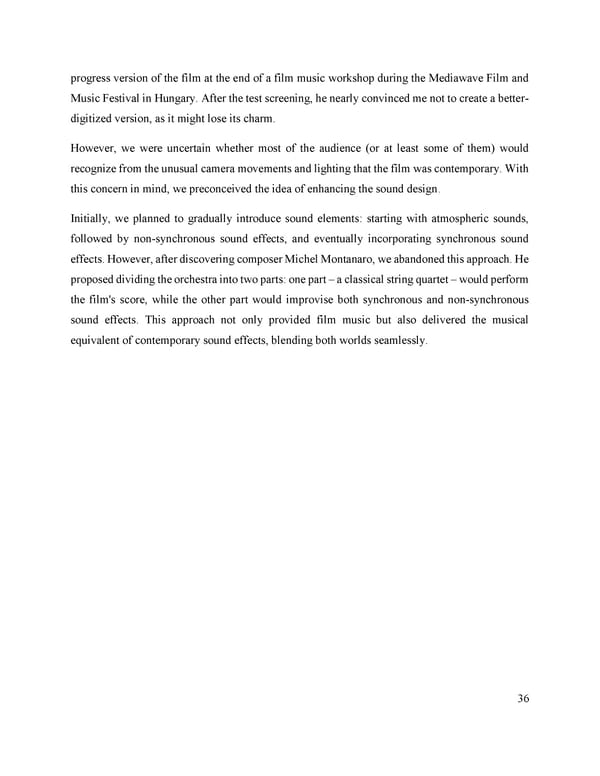progress version of the film at the end of a film music workshop during the Mediawave Film and Music Festival in Hungary. After the test screening, he nearly convinced me not to create a better- digitized version, as it might lose its charm. However, we were uncertain whether most of the audience (or at least some of them) would recognize from the unusual camera movements and lighting that the film was contemporary. With this concern in mind, we preconceived the idea of enhancing the sound design. Initially, we planned to gradually introduce sound elements: starting with atmospheric sounds, followed by non-synchronous sound effects, and eventually incorporating synchronous sound effects. However, after discovering composer Michel Montanaro, we abandoned this approach. He proposed dividing the orchestra into two parts: one part – a classical string quartet – would perform the film's score, while the other part would improvise both synchronous and non-synchronous sound effects. This approach not only provided film music but also delivered the musical equivalent of contemporary sound effects, blending both worlds seamlessly. 36
 Lost Analogue: Exploring Film, Music, and Interdisciplinary Methods in Education Page 36 Page 38
Lost Analogue: Exploring Film, Music, and Interdisciplinary Methods in Education Page 36 Page 38